

Project Managers use what is called a work breakdown structure to keep projects organized. From the initiation phase to the final closeout, this valuable tool can lead to a successful project.
The work breakdown structure can have different layouts; from an outline or list to a tabular view to a tree structure. For visual people, a tree structure makes the most sense because it is basically a visual diagram that allows you to see items at a quick glance. But, some people prefer lists over imagery in which case an outline is the most useful layout.

Traditionally, the work breakdown structure has been a tool used by project managers to do exactly what the name suggests, break down a project into workable pieces. Its hierarchical design divides the scope of a project into components in terms of size, duration, and responsibility. This outline assists with creating a project schedule by defining deliverables, resource allocation, and even cost.
This structure decomposes your project into bite-sized chunks for easier implementation and can be used in different ways, depending on the project or final product. A guideline document from ProjectConnections.com shows the different approaches nicely for identifying the major components of your work breakdown structure.
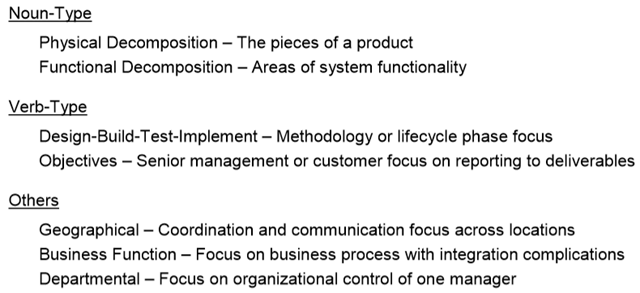
With all of this in mind, a work breakdown structure does not have to be complicated and really can assist with most any type of project. The following examples may not follow the traditional approach to using this helpful tool. However, for the sake of simplicity, for those who are interested in using this structure, and for breaking down and thus simplifying a complex project, they are quite useful.
After defining the entire scope of your project, you will identify the highest level project components. These components might be phases, locations, or even actions as shown above, depending on your project. After selecting these items, you will move down to the next level under each component and continue to break down the project as much as possible. This not only helps you to identify everything that is needed for your project, but will keep you on track by not forgetting anything.
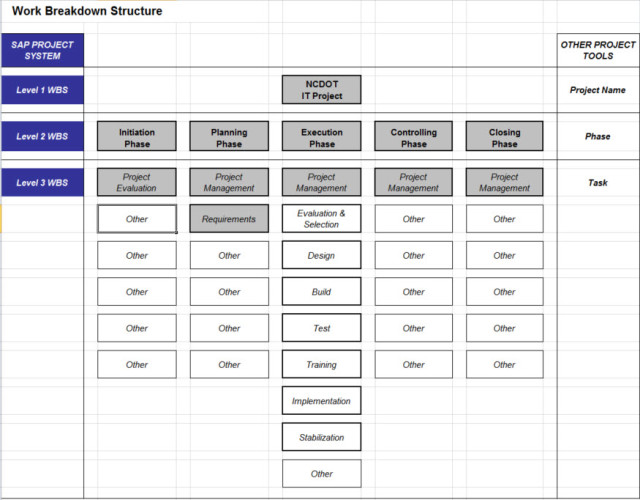
One great project where a work breakdown structure can be helpful is event planning. In this example we are using a bridal shower project with a tree structure that is broken down by phases. This can be a very useful way to drill down to what needs to be done when, from the beginning to the middle to the end of the entire event.
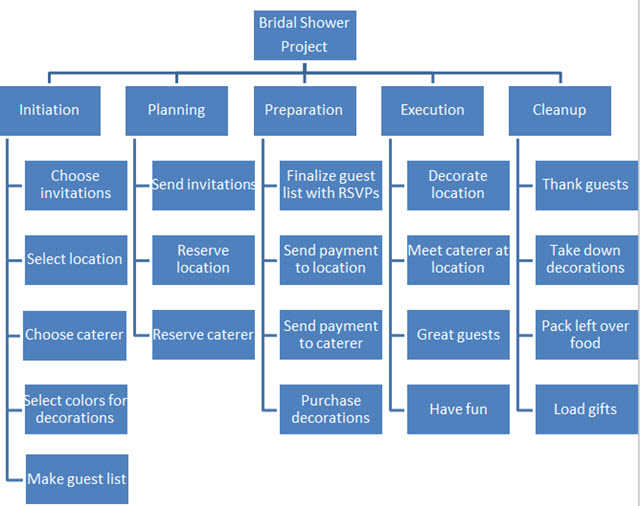
Now of course, you may have many more items for putting together an event, so this just illustrates some basic components as an example. Imagine sitting down with friends who are involved during the Initiation phase and going over each component together. Then for the Planning phase, perhaps each person is responsible for a piece. However you divide the work or whether you even do is up to you. But this tree structure based on phases is one easy way to go.
Another option using the handy tree structure is to base it on objects as major components. This is a useful way to organize a project when you have multiple people planning the event. Each person can take a component and all the pieces that go along with it. Organizing those components in the order they should be completed makes it even easier.
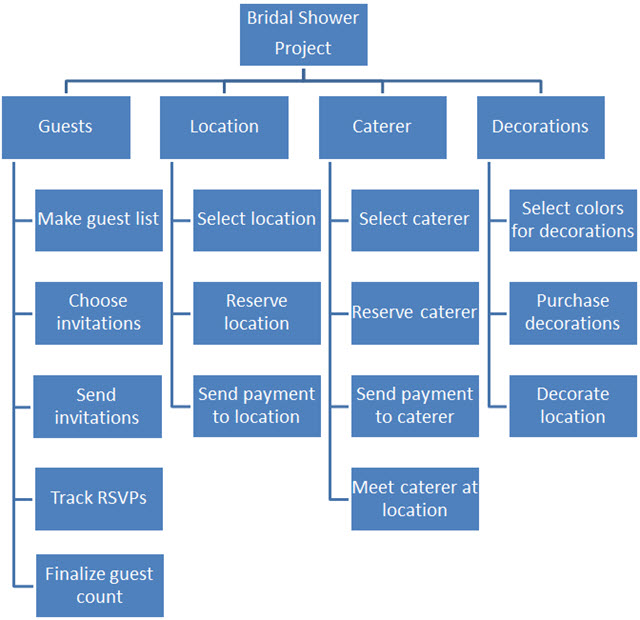
Another terrific project to manage with a work breakdown structure is a home project. Whether you are going as far as remodeling your kitchen or landscaping the yard, this can be a very useful tool. For this example, we will show the breakdown in a list format with the major components as actions.
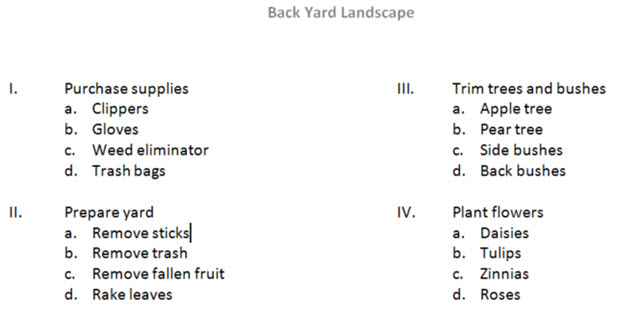
As you can see, the breakdown is still easy to read and lists out all pieces of the project nicely. With each action as a main component you can easily keep track of what needs to be accomplished. Again, you would likely have many additional or different components for your project, but this simply shows the basic structure.
Another option using the list layout is to use locations as main components which works good when different physical areas of your project are needed. As you can see, structuring the breakdown by yard location organizes it in a way where the work can be divided by person or just to keep straight which activities need to be done where.
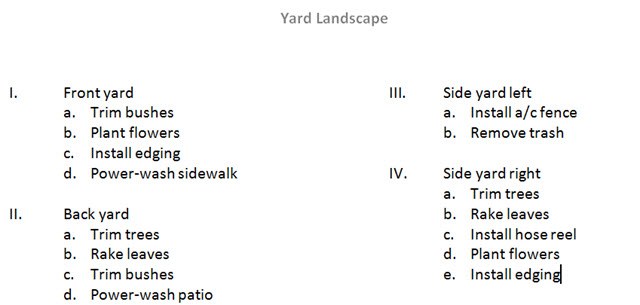
If you do not want to create a work breakdown structure yourself, there are some terrific websites that offer templates. Project Management Doc has a template using a Word document, Project Management Advisor has one using Excel, and Tidy Forms offers both of these formats along with PDF. When all else fails, using a simple paper and pencil to sketch out a tree structure or list format works just as well for some.

A work breakdown structure does not have to be intimidating to use, as you can see. And, it does not have to follow any strict rules. It really just comes down to the best way to manage your personal or home project. Depending on your style, visual or written, or your project, large or small, using this technique helps to ensure that your project is well-organized, which helps you to keep it on track.
When it comes to projects you have to work on, whether an event, home project, or something totally different, how do you organize them? Have you tried using this tool and had success with it? Or, maybe you did and did not even realize it. Further still, maybe you use an online tool. Feel free to share your thoughts with us below!
Image Credit: baranq via Shutterstock.com




 Killing Floor 2 Guide: How to be the Ultimate Survivor
Killing Floor 2 Guide: How to be the Ultimate Survivor The Witcher 3: Wild Hunt Review (PS4): A Masterpiece
The Witcher 3: Wild Hunt Review (PS4): A Masterpiece How To Take and Edit Stunning Screenshots In Fallout 4 PC Version
How To Take and Edit Stunning Screenshots In Fallout 4 PC Version Angry Birds, Tiny Wings, and the Wide World of Mobile Development
Angry Birds, Tiny Wings, and the Wide World of Mobile Development Star Wars Battlefront Guide: How to Win Walker Assault as the Rebels
Star Wars Battlefront Guide: How to Win Walker Assault as the Rebels